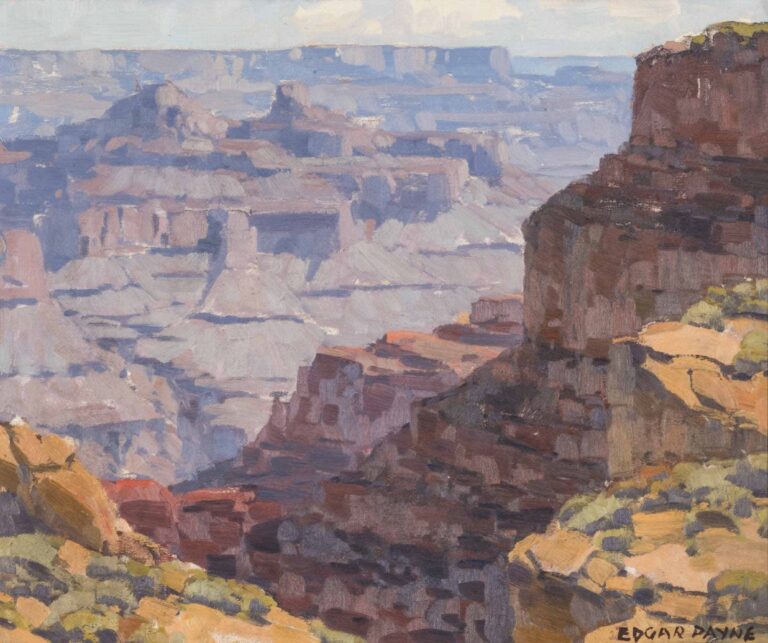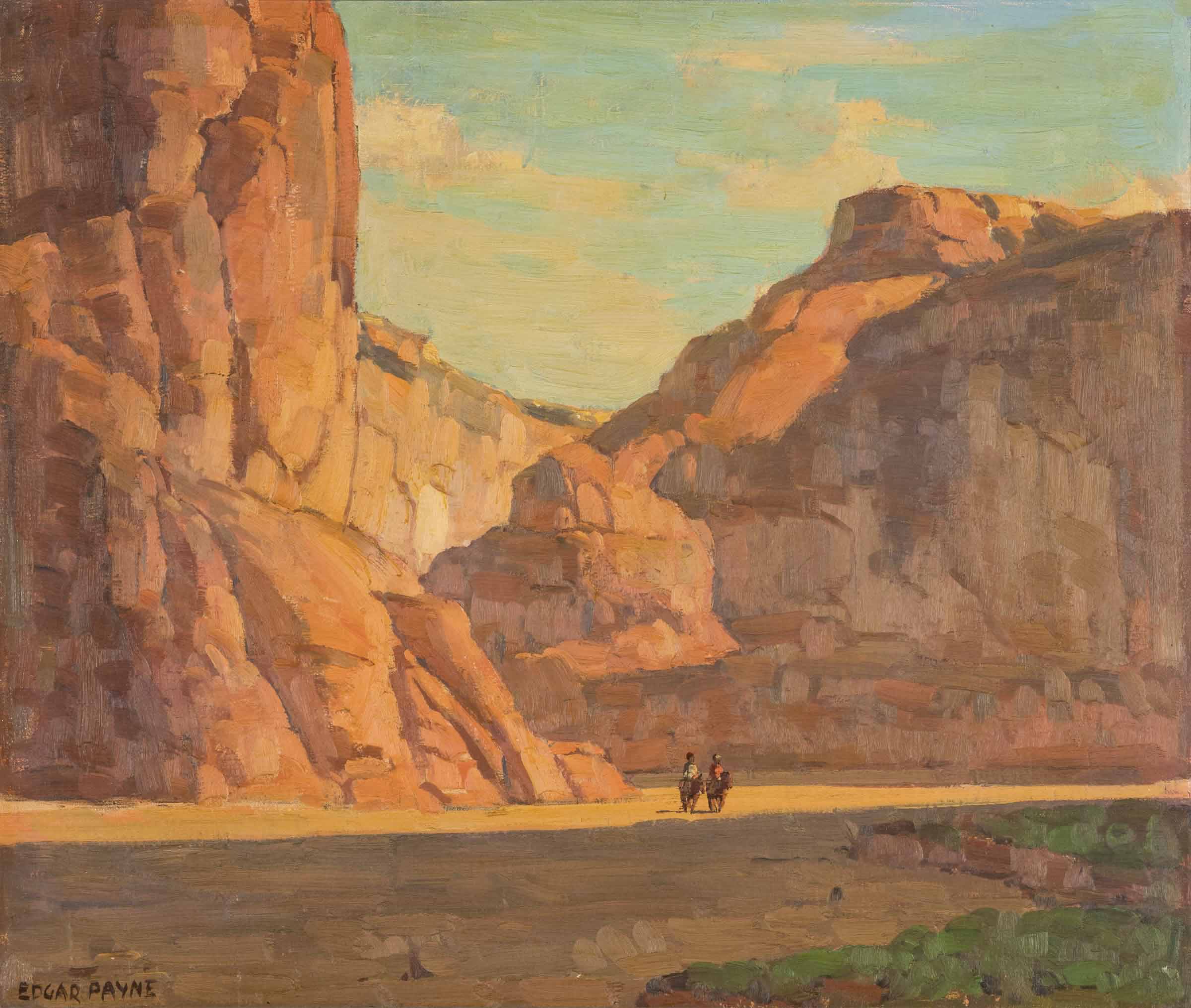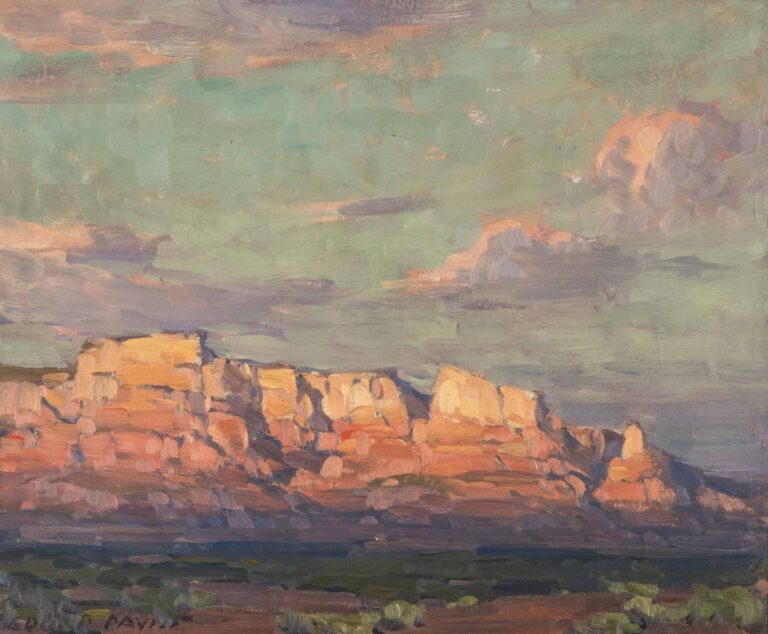Edgar Alwin Payne first visited and painted Canyon de Chelly—a cluster of several canyons, including Canyon del Muerto, in northeastern Arizona—in 1917.1 Commissioned by the Santa Fe Railroad to record the journey from Albuquerque to California, Payne spent four months exploring the canyons, and the artwork he produced cemented his status as one of the period’s leading Western American artists. In Canyon de Muerto, Payne is largely concerned with capturing the scale of the canyon’s 1,000-foot-tall walls. The painting is composed so that the sandstone rock formations extend beyond the boundaries of the frame, taking up over two-thirds of the canvas and rationing the view of the sky. Two strategically positioned horseback riders provide the viewer a reference point for apprehending such dramatic proportions.



